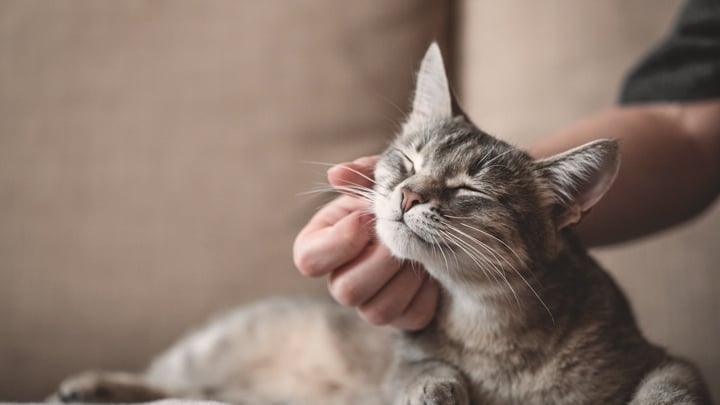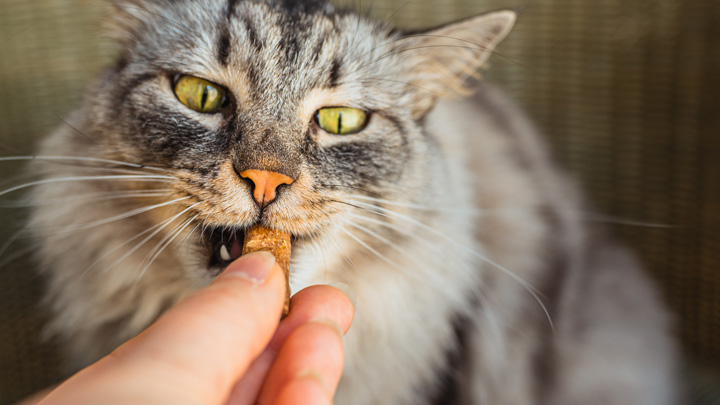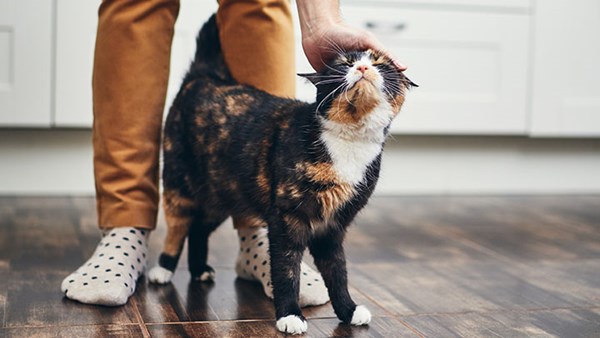How To Train Your Cat
Contrary to popular belief, it is possible to train your cat in certain behaviours and it’s easier than you think! Our guide will help you learn how your cat can be easily trained.

Can you train a cat?
We all know you can train your dog to sit, lie down and roll over but what about cats? After all, they’re not exactly well known for their obedient behaviour and have a reputation for being rather aloof.
Stereotypes aside, while your feline friend might not be willing to offer a paw in return for their next treat, training them is possible. Not only that, if you start them young it can reap benefits, helping them feel more comfortable when it comes to hopping in a cat carrier and going for vet checks.
Are cats easy to train?
Cats have a reputation for being quite imperious creatures at times. Loving though they may be, it can seem like its always on their own terms. Yet contrary to popular belief, it is possible to train your cat in certain behaviours and it’s easier than you think.
When it comes down to it, cats are smart and actually quite receptive to training, especially if you play to their natural instincts.
Why should I train my cat?
There are sound reasons for training your cat - like dogs, cats need stimulation and enrichment in their lives, or they can quickly become bored. This can lead to issues such as weight gain, destructive behaviour and depression. Training them involves both mental and physical activity, which helps keep them in peak condition.
It doesn’t just bring benefits for your pet either, it can help you too. Training your cat is a fun thing to do, it can build trust, increase that bond between you and make your relationship with them more fulfilling. The more time you spend with your cat the more you’ll understand their body language and what makes them happy, and they’ll come to appreciate your company more too.
Is it too late to train my cat?
You can’t teach an old dog new tricks, or so the saying goes, but it’s simply not true and the same applies to cats. Naturally, the younger they are when you train them the less likely they are to develop bad habits but that doesn’t mean senior cats aren’t capable of learning new behaviours.
Training is more about personality and ability than age and particularly with senior cats, it can offset any cognitive decline because it enables them to stay mentally active.

How to train a kitten
Training your kitten from the moment you welcome them into your home is a great idea because those good behaviours become ingrained from an early age. Kittens are playful animals which makes them very receptive to training but they also have limited attention spans, so you need to keep it short and sweet.
- Simple commands – Start with simple commands such as getting them to sit, either by using the same voice command each time or a cat clicker, and then bringing out the treats every time they do as asked
- Name recognition – You can use their name and a cat clicker to get them to come to you when you call. Reward them with a treat every time they manage it
- Desensitisation – Fireworks and loud noises can scare your kitten, triggering anxiety, disorientation and distress. You can desensitise them over time by playing firework noises quietly at first, then gradually getting louder and rewarding them each time to change the way they behave. For more advice on desensitisation training, read the full article here
- Carrier training - Use food to encourage them into a cat carrier. Put their meal or a treat inside and let them freely use the space so they learn to like it and not be afraid
- Socialisation – Get them used to other animals or people when they’re young so they don’t end up a nervous adult. Let people meet your kitten at home and fill the experiences with fun and treats so they understand it’s perfectly normal
- Safe play – Kittens have lots of energy and love to play but you don’t want them scratching or biting your skin. Use toys such as feathers, sticks and balls to encourage your kitten to play rough with them instead
- Litter training – This can be as simple as popping them in the litter tray so they can familiarise themselves with it
 Can you train a senior cat?
Can you train a senior cat?
Senior cat training is not dissimilar to that of kittens, but you should bear in mind that while your cat may respond well to training, they might not have the agility or mobility of a young cat. Respecting their physical limitations and making sure training is stress-free is essential.
You can train older cats to not scratch certain furniture or objects in your home by blocking them off and providing alternatives like scratching posts.
Can cats learn commands?
You can use simple commands with your cat like “fetch”, “come”, “stand”, “sit” and “lay down”. By repeating these commands over and over, using a cat clicker after each command and reinforcing good behaviour with treats, most cats will learn to react accordingly. Saying “in the box” is another useful command for getting them to understand when it’s time to go in the carrier.
With all commands remember to keep them simple, no more than one to three words, so they’re easily recognisable to your pet and they begin to associate them with the action you want them to take.
Carrier training
Carrier training comes under the banner of useful rather than fun training, but it is an important skill to master. Your cat will inevitably have check-ups and trips to the vet which are much easier and far less stressful if you can get them to easily go in their carrier.
The last thing you want is for your pet to become stressed as you struggle to pop them inside. Not only will it make them fearful of you it can mean they’re also fearful of your vet and the whole experience becomes rather unpleasant.
As we said earlier, put their meals inside and encourage them to free play around it. You want to get them familiar with the space so when they do need a trip to the vet it’s as uneventful as possible.

Positive reinforcement
Whether your cat is young or old you should never punish them if they get it wrong – it can teach them to pull back and distrust you. Instead, use positive reinforcement whenever they get something right. This is a far more effective way to get them to adhere to the behaviour you want. It also creates a better, closer relationship between you both rather than one built on fear.
Best treats for training cats
Cats are motivated by food just like dogs so stick to the treats they love the most. Little bits of tuna, chicken, prawn and other cooked meats are ideal, but you can also buy plenty of tasty specialist cat treats too.
Just remember cats are only small creatures – their rewards should be similarly small too. They can also be a little grabby in their excitement. You can always give them a treat in a spoon or a bowl to save your fingers being bitten by accident or offer them a little meat paste straight out the tube.

Understanding Your Cat's Behaviour
Cats are intriguing pets, we’ve tried to answer some common questions from cat-owners about their cat’s behaviour.
Read article
Responsible Cat Owner's Guide
Refresh your knowledge of responsible cat ownership with our complete guide.
Read article
